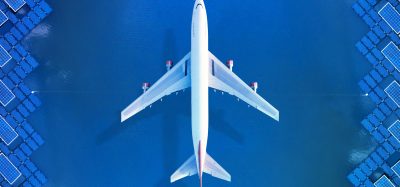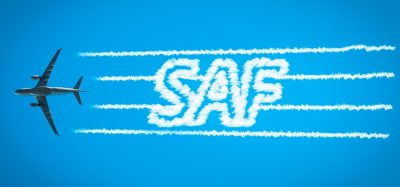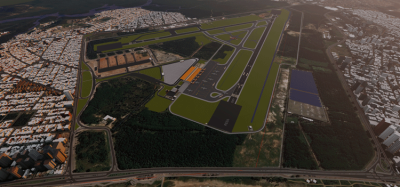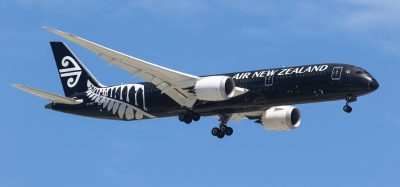Opportunities for reducing surface emissions
- Like
- Digg
- Del
- Tumblr
- VKontakte
- Buffer
- Love This
- Odnoklassniki
- Meneame
- Blogger
- Amazon
- Yahoo Mail
- Gmail
- AOL
- Newsvine
- HackerNews
- Evernote
- MySpace
- Mail.ru
- Viadeo
- Line
- Comments
- Yummly
- SMS
- Viber
- Telegram
- Subscribe
- Skype
- Facebook Messenger
- Kakao
- LiveJournal
- Yammer
- Edgar
- Fintel
- Mix
- Instapaper
- Copy Link
Posted: 28 March 2008 | Prof. Hamsa Balakrishnan, Department of Aeronautics and Astronautics, Massachusetts Institute of Technology | No comments yet
Flights in the United States spent more than 20 million minutes taxiing in to their gates and over 49 million minutes taxiing out for departure in the year 2006. Aircraft taxiing on the surface contribute significantly to the fuel burn and emissions at airports.
Flights in the United States spent more than 20 million minutes taxiing in to their gates and over 49 million minutes taxiing out for departure in the year 2006. Aircraft taxiing on the surface contribute significantly to the fuel burn and emissions at airports.
The quantities of fuel burned, as well as different pollutants such as carbon dioxide, hydrocarbons, nitrogen oxides, sulphur oxides and particulate matter, are proportional to the taxi times of aircraft. This is in combination with other factors such as the throttle settings, number of engines that are powered, and pilot and airline decisions regarding engine shutdowns during delays. In addition, at several of the busiest airports, the taxi times are large and tend to be much greater than the unimpeded taxi times for those airports.
The above observations suggest that there are opportunities to improve the environmental performance of airports, and surface emissions in particular, through the optimisation of surface movements. The Partnership for AiR Transportation Noise and Emissions Reduction (http://www.partner.aero), a U.S. FAA Centre of Excellence, headquartered in the Massachusetts Institute of Technology (Aeronautics and Astronautics Department), is pursuing this research as part of an effort supported by the FAA’s Office of Environment and Energy. This project, ‘Airport Surface Movement Optimisation’, is a follow-up to a U.S. Energy Policy Act study, where the potential for significant fuel and emissions savings were demonstrated. The current project hopes to complement the results of the EPAct study by exploring some attractive near-term opportunities for surface optimisation, as well as by assessing the critical implementation barriers that need to be overcome, prior to adoption at airports nationwide. We intend to further the preliminary concepts proposed, as part of the Departure Planner project that was conducted by MIT with the support of NASA Ames Research Centre, and in collaboration with Boston’s Logan International Airport.
Operations on the airport surface, include those at the gate areas/aprons, the taxiway system and the runway systems, are strongly influenced by terminal-area operations. These different surface elements have aircraft queues associated with them and interact with each other. The cost per unit time spent by an aircraft in one of these queues depends on the queue itself; for example, an aircraft waiting in the gate area for pushback clearance might predominantly incur flight crew costs, while an aircraft waiting for departure clearance in a runway queue with its engines on incurs additional fuel costs, and contributes to surface emissions.
The taxi-out time is defined as the time between the actual pushback and takeoff. This is the time that the aircraft spends on the airport surface with engines on, and includes the time spent on the taxiway system and in the runway queues. Surface emissions from departures are therefore closely linked to the taxi-out times. For this reason, by addressing the inefficiencies in surface operations, it may be possible to decrease taxi times and surface emissions. This was the motivation for prior research on the Departure Planner.
There are two primary aspects to planning departure operations on the surface: the first involves determining runway schedules that conform to downstream flow restrictions and terminal-area constraints, and the second is determining the pushback times and taxiway schedules that deliver aircraft to the departure queues, so they conform to the runway schedules. The runway schedule determines the departure throughput of the airport, while the pushback times and taxiway schedules determine the taxi-out times. The runway and taxiway schedules interact with each other, and coordination is the key to efficient surface operations. By allowing only one aircraft at a time on the taxiway, every flight can achieve its unimpeded taxi times, but the departure runway schedules would be affected, resulting in very low airport throughput. Conversely, aircraft could all pushback from their gates at their earliest times and create large departure runway queues, resulting in a departure throughput close to the runway capacity, but also high taxi-out times and surface emissions.
One approach that has shown the potential to significantly reduce taxi-out times is that of limiting the buildup of queues on the airport surface, through controlling the times at which aircraft pushback from their gates (‘gate-holding strategies’). As more aircraft pushback from their gates onto the taxiway system, the throughput of the departure runway initially increases because more aircraft are available in the departure queue. As this number exceeds a threshold, the departure runway capacity becomes the limiting factor, and there is no additional increase in throughput. Any additional aircraft that pushback simply increase their taxi-out times. Gate-holding strategies therefore try to control the number of aircraft that pushback onto the taxiways.
A few of the research thrusts pursued in this project are:
Identification of inefficiencies/ opportunities for improvement in current surface operations
The first step will be the identification of opportunities to decrease taxi times, by determining inefficiencies in current operations. For example, excessive runway queuing is one such source of inefficiency that has been previously identified. Consequently, this project will investigate approaches to decrease taxi times, such as:
- gate-holding strategies to support improved departure planning
- taxi-route planning, including the use of perimeter taxiways in order to avoid active runway crossings
- improved air traffic management procedures
- use of surface infrastructure, such as tugs and holding areas, to enable tow-outs and departure staging.
At the simplest level, gate-holding strategies determine pushback times based simply on the number of aircraft in the taxiway; alternatively, they may be decided based on the locations and taxi routes of the other aircraft on the surface and the runway schedules. We intend to further pursue both of these methods for controlling the pushback times of aircraft to decrease taxi-out times; in addition we will also investigate other sources of inefficiency in surface operations and other opportunities to decrease taxi times. Through field observations at airports, we plan to; understand and model current operations, identify locations on the surface where queues currently build up, identify sources of taxi delays, etc.
Analysis of different surface movement optimisation strategies, and their potential benefits
In addition to the identification of opportunities for improvement, we are considering the incorporation of environmental factors into the objective functions of the surface movement optimisation. This can be done through the use of aircraft-specific delay costs in the objective function, which will reflect the fact that the emissions characteristics of different aircraft may differ. For example, given a choice of aircraft that will incur delay in a departure queue, it would be preferable from the emissions perspective to delay an aircraft that has lower emissions and allow an aircraft with higher emissions to takeoff. However, any subsequent airborne delay costs and fuel burn will have to be accounted for, as will the need for equitable treatment of airlines.
In the absence of the proper incentives, airlines with more modern fleets will consistently incur larger delays than airlines with older fleets, making the optimal solution with regards to the environmental objective unacceptable to them in practice. We therefore propose the development of approaches to surface movement optimisation that will balance both airport throughput and emissions objectives; while simultaneously ensuring fairness in the delays incurred by the different airlines. The development of surface optimisation techniques will be accompanied by an analysis of the potential benefits of the proposed approaches, quantified by both the decrease in taxi times and the resultant decrease in aircraft emissions. This analysis, possibly conducted using tools such as the Emissions and Dispersions Modeling System, will determine whether it would be worthwhile to pursue these strategies for reducing surface emissions.
Identification of potential barriers to the adoption of promising surface movement optimisation strategies
We recognise that there may be barriers to the practical adoption of these approaches, such as:
- gate usage and ownership issues
- surface infrastructure including; taxiway layouts, availability of tugs, and the presence and location of holding areas
- airline competition
- tradeoffs between airline and air traffic control objectives
- traffic flow management initiatives in the airspace
- presence of uncertainty in airport processes (which result in uncertain estimates of pushback times and taxi times).
These factors may potentially pose significant challenges to surface movement optimisation. This project will first consider strategies such as gate-holds and taxi-route planning to decrease taxi times, and then consider options that require airport infrastructure development, such as the construction of perimeter taxiways and holding/departure staging areas, and the purchase of surface equipment such as tugs.
Development of a plan for the field trials of promising concepts
The successful completion of the above steps will allow us to identify the most promising concepts for reducing surface emissions, and develop a plan for field trials. A key task in this research will be the identification of criteria that make an airport a good candidate for future field trials (if the concepts are found to be feasible and worth pursuing). Potential criteria for determining potential sites include:
- magnitudes of departure taxi delays
- average taxi times
- airport layout and other infrastructure considerations
- current operational and air traffic control procedures
- gate lease or ownership rules
- presence or absence of ramp control by airlines, and level of competition between airlines at the airport
- availability of flight information on the ground and in the terminal area (surveillance)
- consideration of airports located in non-attainment or attainment areas.
Cooperation from the various stakeholders, including airport operators, airlines operating at the airport, as well as air traffic control, will be essential for the success of this project. Site visits and the analysis of operational data will be an essential part of this step.
Description of an initial plan for a pilot airport study, on reducing emissions through improved surface traffic management
Having determined criteria for the selection of candidate airports, we will also develop an initial plan for a pilot airport study, demonstrating the surface traffic optimisation concepts developed and the resultant reduced surface emissions benefits.
We believe that there are several promising opportunities for reducing aircraft emissions at airports, through the improved planning and coordination of surface movements. Feedback and cooperation from the different stakeholders in the system, including airport operators, airlines and air traffic control, are critical to the success of this research. We welcome suggestions and comments on the proposed research from interested parties.
About the author
Hamsa Balakrishnan is the T. Wilson Career Development Assistant Professor of Aeronautics and Astronautics and of Engineering Systems at the Massachusetts Institute of Technology. She received a B.Tech in Aerospace Engineering from the Indian Institute of Technology in 2000 and a PhD in Aeronautics and Astronautics from Stanford University in 2006. Prior to joining MIT in January 2007, she was a researcher at the University of California, Santa Cruz and the Terminal-Area Air Traffic Management Research Branch of NASA Ames Research Center.
Her research interests include algorithms for the scheduling and routing of air traffic, techniques for the collection and processing of air traffic data, and mechanisms for the allocation of airport and airspace resources.

















